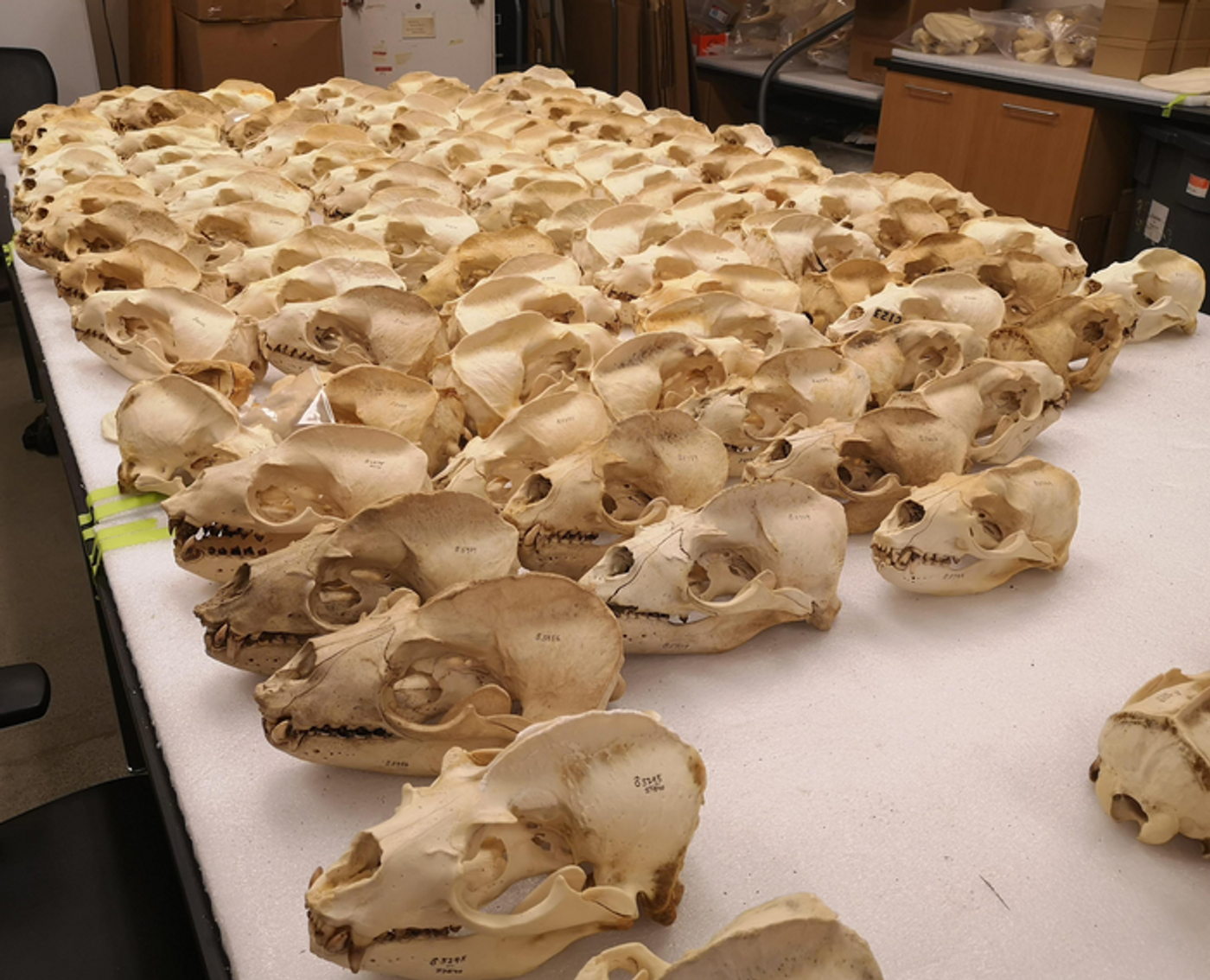Size Matters: Male California Sea Lions Adapt to Competition by Getting Bigger
A new study by scientists at UC Santa Cruz found that male California sea lions have gotten larger over the past 50 years as the population grows, while the size of females of the species has remained consistent. The research published in Current Biology contradicts the commonly known pattern that animals tend to follow regarding competition over food and body size. Specifically, that body size decreases when population (and competition over resources) increases.
California Academy of Sciences collection of California sea Lion skulls. Credit: Ana Valenzuela Toro
Carrying capacity is the idea that a given ecological niche can only support so many of a species within its geographical area. The number of California sea lions in certain areas of their habitat is now getting close to reaching that threshold due to an increase in population following the 1972 Marine Mammal Protection Act.
While most marine mammal species decline in size as population increases, male California sea lions appear to be growing. This is happening for several reasons that researchers Ana Valenzuela-Toro, Paul Kosh, and Daniel Costa of UCSC aim to elucidate.
The team examined more than 300 sea lion skulls (female (n = 66) and male (n = 273)) dating from 1962 to 2008 that were collected around central California. They analyzed the skeletal remains for both morphological variation and isotopic data that can shed light on diet.
"We found that male California sea lions have expanded their ecological niche, which means they are now foraging on a more diversified group of prey and expanding the places where they are foraging," Valenzuela-Toro noted. "Apparently they are now going farther north than they used to, which is consistent with observations reported by other researchers."
Isotopic data shows that these mammals have expanded their diet considerably and, in doing so, have gotten physically larger overall while their numbers increase, in opposition to the previously held dogma. Paul Koch, UCSC professor of Earth and Planetary sciences and one of the study authors noted just how strange this phenomenon is, "It’s counterintuitive. You would expect that their body size would decrease as dietary resource competition intensified.”
Because of their larger size these animals can travel farther and deeper and hunt more varied prey. It's also possible that, due to the success of the larger animals, reproductive competition favored the larger size despite increased competition. Valenzuela-Toro adds, "Body size is very important in competition with other males to control territory at breeding sites. Being bigger also means they can fast longer and stay on the beach to defend their territory."
For the sea lions, this is great news, however Valenzuela-Toro notes that "if warm conditions become more frequent, we could see lower availability of their preferred prey...Then we might see their population size start to plateau or decrease, and we could even see body size start to decline"
Time will tell what happens to these animals as climate change progresses and oceanic temperatures continue are altered.
UCSC News, EurekAlert!, Current Biology, National Geographic









